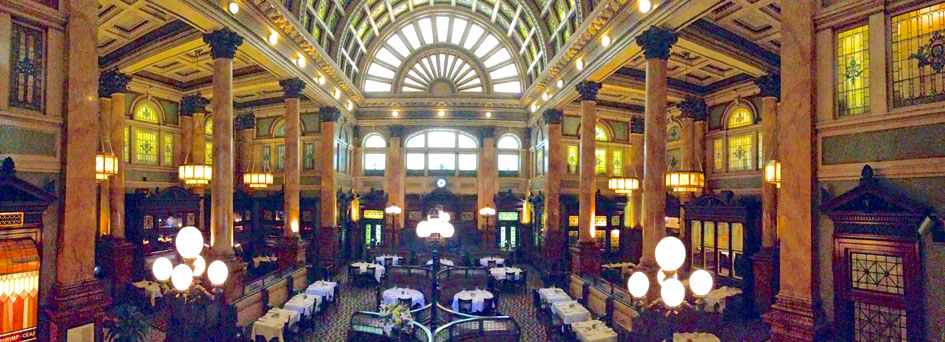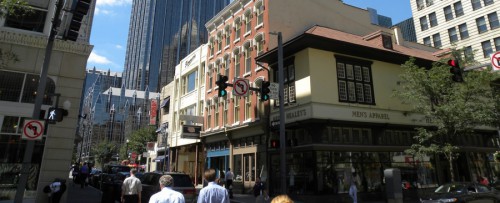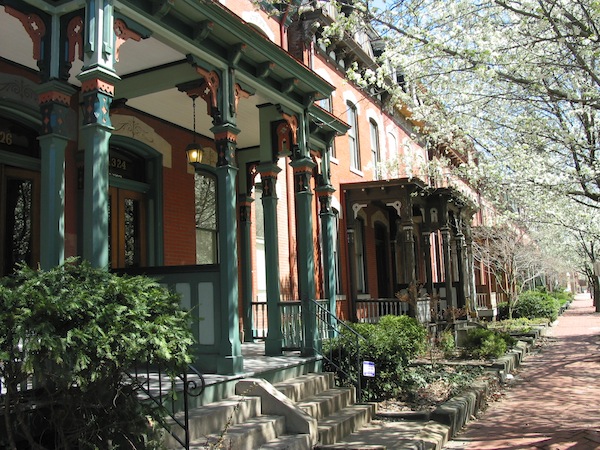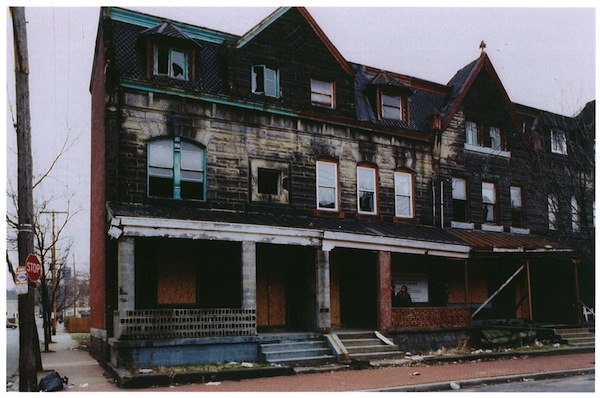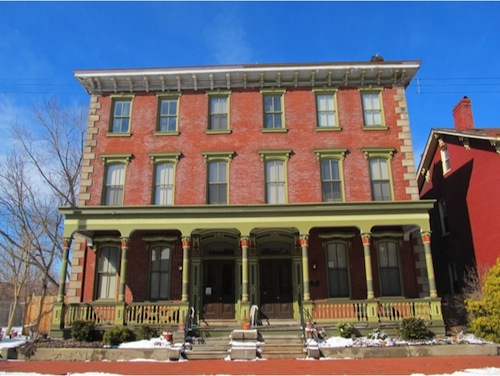
Latest News
-
Tarentum/Natrona Tour on April 25 Will Be Inspiring
For reservations, contact Mary Lu Denny (412-471-5808, ext. 527).
For further details, click here.
Check out the gallery of 35 photos below to see some of the places you will see during PHLF’s tour of Tarentum and Natrona on Saturday, April 25, from 1:00 to 4:45 p.m. “We are grateful to Cindy Homburg and David Rankin of Tarentum,” said PHLF’s Executive Director Louise Sturgess, “and to Bill Godfrey of Natrona. They are leading preservation efforts in the two Allegheny-river communities and have created a wonderful tour for up to 40 of our members and friends.”
Participants will meet in Tarentum, where the afternoon event begins with a Dutch-treat lunch at the former train station. Then, the group will tour the Masonic Temple, Eureka Hose Company (where one of the fire trucks that helped fight Pittsburgh’s Great Fire in 1845 is displayed), a public school that has been converted into an office building, and Central Presbyterian Church, with beautifully restored windows.
Participants will then follow First Avenue to Natrona and meet at Bill Godfrey’s studio and home (featuring an incredible interior) and sip Natrona soda pop! After seeing the breathtaking interior of St. Joseph Church, participants will see the PennSalt worker’s housing and explore the community park featuring mosaics celebrating Natrona’s rich history.
-
30 Student Teams Propose New Uses for Lawrenceville Lot
“All of my students absolutely benefited from this project. It gave them an excellent hands-on way to practice math/science skills learned in class.” ––Westmoreland Middle School Teacher
More than 130 middle and high school students from Westmoreland County participated in PHLF’s 19th Annual Architectural Design Challenge on February 26 and 27, 2015 at Monessen High School. Students worked in teams to create models showing their vision for the corner lot in Lawrenceville at Penn Avenue and 34th Street, across from Doughboy Square. The photo gallery below shows the exceptional models that were presented by the student teams on February 26 and 27.
Students considered historical context and sustainability and came up with terrific design concepts, including: Mars Grille; a restaurant with apartments above; ABC Fun Center (Arcade, Bowling, Cuisine); The Dough Factory; The Skyline Bakery; Paws Playhouse (a dog daycare); a bakery with an apartment for the owners; Rigotoni (an Italian Restaurant); the Lawrenceville Cafe with apartments above; the Sweetheart Bakery, Boutique, and Bar; a frozen yogurt, bakery, and rooftop cafe; Le Restaurant Genial; Palate to Palette––Around the World (an interactive restaurant that allows people to experience cultural foods and crafts); The Skyline Cafe with apartments for college students; and the Stephen Foster Music Center.
Award recipients on February 26 were:
- Wendover Middle––First Place & Student Award
- Monessen Middle––Second Place
- Trafford Middle––Third Place
- Greater Latrobe Middle––Honorable Mention
- Harrold Middle––Honorable Mention
- Penn Middle (Team C)––Honorable Mention
- Penn Middle (Team B)––CMU School of Architecture Award (most creative use of recycled materials)
- West Hempfield Middle––Penguin Award (for the biggest risk and lesson learned)
Award recipients on February 27 were:
High Schools:
- Penn-Trafford––First Place, Student Award, & CMU School of Architecture Award (most creative use of recycled materials)
- Mount Pleasant––Second Place & Penguin Award (for the biggest risk and lesson learned)
- Yough––Third Place
- Derry Area––Honorable Mention
Middle Schools:
- Franklin Regional Team C––First Place
- Franklin Regional Team D––Second Place
- Yough Team A––Third Place & CMU School of Architecture Award (most creative use of recycled materials)
- Franklin Regional Team E––Honorable Mention
- Yough Team B––Student Award
- Yough Team E–– Penguin Award (for the biggest risk and lesson learned)
PHLF thanks Cinda Maxwell of Monessen High School for all her help in coordinating the Design Challenge and the following people who critiqued the student projects on February 26 and 27: Ray Bowman (Lami Grubb Architects), Samantha Carter (CMU, School of Architecture), Barbara Ciampini (City of Greensburg), Steven Gifford (Greensburg CDC), Joshua Alan Harter (AE7), Roger Hartung (IKM, Inc.), Jim Speck (Lami Grubb), Paul Steidl (Perkins Eastman), Kelley Stroup (Architectural Historian), and PHLF interns Kirsten Armstrong, Luke Meyer, and Lauren Van Zandt.
“We are grateful to BNY Mellon Foundation of Southwestern Pennsylvania and the McSwigan Family Foundation for their contributions to our educational programs for young people that help underwrite the Architectural Design Challenge,” said PHLF Executive Director Louise Sturgess. The Design Challenge introduces students to the careers associated with community development and helps them develop their teamwork, problem-solving, and critical thinking skills.
-
Manchester: First in a Series of PHLF’s Greatest Saves in 50 Years
PHLF turned 50 on September 30, 2014. Intern Lauren Van Zandt, a Public History graduate student at Duquesne University, is sharing the stories of some of PHLF’s “Greatest Saves.” Help us celebrate 50 years of Pittsburgh renewal with a donation to our 50th Anniversary Fund. Click here.
“The origin of PHLF has long taken on a legendary character. In early 1964, James D. Van Trump and Arthur P. Ziegler, Jr. were walking along the 1300 block of Liverpool Street in Manchester, looking at a remarkable row of mansard-roofed double houses and deploring a condition that foretold their replacement by new housing. The idea came to them of a preservation group that would find means of continuing such houses in use, externally restored, fully habitable, and with the same kinds of people, if not exactly the same people, in each house. … Such preservation would have to prove itself to officials and money sources, and to neighborhoods themselves. The Pittsburgh History & Landmarks Foundation was incorporated on September 30, 1964 … as an organization with practical and considerate alternatives to conventional urban renewal.” —A Past Still Alive: The Pittsburgh History & Landmarks Foundation Celebrates Twenty-Five Years, Walter C. Kidney (1989)
I wanted to start this series with Manchester not only because it was one of PHLF’s first projects and greatest saves, but also because it is a neighborhood that is near and dear to my heart.
As a recent Pittsburgh resident hailing from Baton Rouge, where most of the buildings were erected after 1950, Pittsburgh’s historic architecture and neighborhoods are endlessly fascinating. I had actually never set foot in Pittsburgh before moving here, and I ended up in Manchester purely by a lucky chance. I was attracted initially by the low cost of housing and proximity to Downtown, but the longer I’ve lived in Manchester the more I’ve come to appreciate the unique beauty of its buildings and the care with which they are maintained.
In the mid-1960s PHLF partnered with the Urban Redevelopment Authority and helped establish the Manchester Citizens Corporation with the goal of revitalizing the neighborhood through historic preservation without displacing the people who lived there. In 1967 PHLF started its first Manchester restoration at 1329 Liverpool Street. The task of preservation became easier in 1975 as the coalition’s efforts were validated when most of Manchester was added to the National Register of Historic Places. This neighborhood preservation program was the first of its kind in the United States, and set a precedent that PHLF has followed for decades.
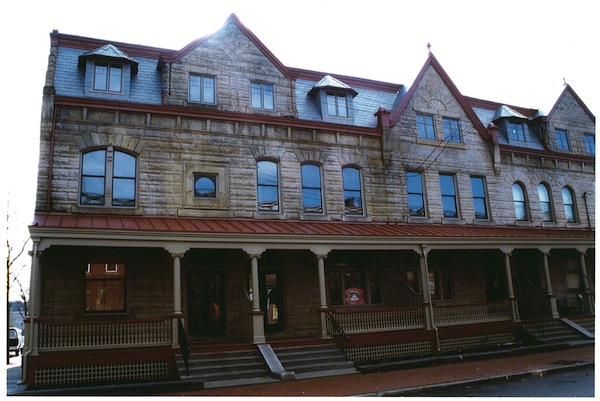 Living in Manchester, I walk down streets lined with beautiful Italianate and Second Empire houses, interact with a diverse group of neighbors, and daydream about buying the last vacant historic house on the block and lovingly restoring its ornate turn-of-the-century woodwork façade. PHLF has restored many of the houses I stroll past on Sheffield and Bidwell Streets and see out my window.
Living in Manchester, I walk down streets lined with beautiful Italianate and Second Empire houses, interact with a diverse group of neighbors, and daydream about buying the last vacant historic house on the block and lovingly restoring its ornate turn-of-the-century woodwork façade. PHLF has restored many of the houses I stroll past on Sheffield and Bidwell Streets and see out my window.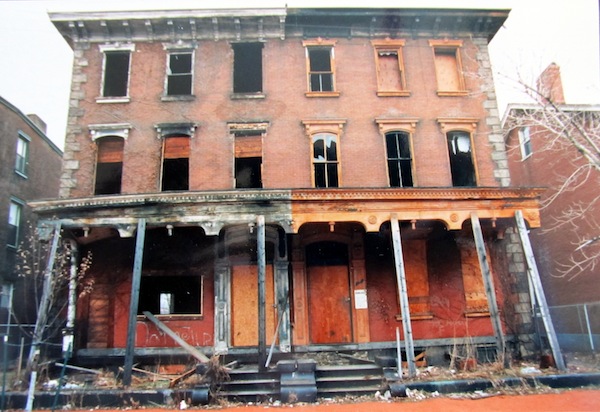 Without grants and economic incentives, this building would have remained an abandoned, burned-out hulk and would eventually have collapsed at the hands of Mother Nature or the wrecking ball. Without the measures taken to prevent the displacement of low-income residents, I would not have been able to afford to live in Manchester with a graduate student’s meager means. Luckily, my story is far from unique; individuals and families all over Pittsburgh are living in houses restored or inspired by PHLF’s preservation efforts.
Without grants and economic incentives, this building would have remained an abandoned, burned-out hulk and would eventually have collapsed at the hands of Mother Nature or the wrecking ball. Without the measures taken to prevent the displacement of low-income residents, I would not have been able to afford to live in Manchester with a graduate student’s meager means. Luckily, my story is far from unique; individuals and families all over Pittsburgh are living in houses restored or inspired by PHLF’s preservation efforts.As PHLF reaches its 50th year, it is vital to remember the importance of community support in order to ensure another half-century of preservation, renewal, and growth. Please consider making a donation to the 50th Anniversary Fund to build a base for PHLF’s preservation services and educational programs for the next 50 years.
-
Architecture Apprentices Propose Plans for Homestead Lot
“The Apprenticeship Program is very rich in knowledge, learning, and experience. It really gives you a good look into the field and how it integrates in society.”
––High School Participant, Fall 2014Eighteen high school students completed PHLF’s Architectural Apprenticeship on December 11, 2014, and presented their plans for the vacant lot at 307-09 East Eighth Avenue, Homestead. The five-session course, sponsored by the Allegheny Intermediate Unit, is designed to help high school students decide if they want to study architecture in college/university.
Below is a gallery of photographs of some of the student designs for the vacant lot. They envisioned restaurants, art galleries, a video-game house, coffee shop and yoga studio with a rooftop garden, music hall, apartments, multi-purpose workspace, counseling center and therapy office, frozen yogurt shop and Kabob House, Juice Bar and outdoor garden, pottery studio and cafe, and a music and comic book store, among other concepts.
“After spending hours developing their design ideas based on feedback from CMU architecture students and professional architects, the high school students spoke convincingly about their design ideas. They came up with sustainable, mixed-use concepts that would benefit the community,” said Executive Director Louise Sturgess. “We were all impressed with their ability to convey their design ideas through plans, sections, elevations, and perspective drawings.”
Patrick Shattuck of the Mon Valley Initiative and Preservationist Kelley Stroup critiqued the final designs, along with James Washabaugh of Michael Baker, Inc., who co-taught the class with Louise.
-
A Look at Our Work in 2014
Dear friends,
As we enter the final month of 2014, I want to reflect on some of the specific results of our work during our 50th year in historic preservation.
In education, we interacted this year with more than 10,000 people through neighborhood and downtown walking tours and creative programming for students and adults. We published eight Poetry and Art books written by students and teachers, awarded four scholarships to college-bound students as part of the Landmarks Scholarship Program, and created a video narrated by Pittsburgh Public School students for their peers in Dunfermline, Scotland. Our staff was supported in this work by 60 volunteers and eight college interns who volunteered a total of 3,800 hours.
At the Landmarks Preservation Resource Center in Wilkinsburg, we ventured further in our educational programming where we offer workshops, lectures, and screen films on physical house restoration skills, architectural history, and urban planning. We had 65 sessions this year and saw more than 800 event attendees.
With the help of James Shipman, an artist and sculptor, we cleaned and restored eight medallions and shields from the former Manchester Bridge (1915-1970). They are mounted as an artistic display on the exterior walls of the Landmarks Preservation Resource Center.
Through the Historic Religious Properties program, we have awarded $95,710 to 12 religious institutions, thanks to support from PHLF and contributions from our members and several foundations.
We completed the acquisition of a preservation easement on Wilpen Hall in Sewickley Heights, thus protecting the facade of the National-Register-listed home, designed in 1899-1900 by George S. Orth, and over 30 acres of surrounding gardens and grounds.
A grant from the Colcom Foundation is enabling us to refurbish 50 of the earliest vintage Historic Landmark plaques. We awarded 17 new plaques to various buildings this year. We also successfully completed the nomination of the Strip District to the National Register of Historic Places and are working on a similar designation for the central business district along Wilkinsburg’s Penn Avenue.
In preservation real estate development, we are in the process of completing the restoration of the last of 10 historic facades in Downtown Pittsburgh that we restored under a $4 million state grant in partnership with the Urban Redevelopment Authority of Pittsburgh.
Also in Downtown, we are moving along with the restoration of the Thompson’s Building in Market Square where a gourmet grocery store will open in 2015. At 420-422 Wood Street, we completed the restoration of the historic cast-iron facades and Katie’s Kandy, a sweets store, has opened a shop on the ground floor. We are now re-designing the upper floors of the building for office space. Across the street at 413-415 Wood Street, we have started design work for the restoration of the former Weldin’s Building.
Our work outside the city includes the completion of the restoration of the workers’ board-and-batten house in Natrona. In the Main Street National Register District of Butler, we continued and completed placement of new welcome signs, replaced sidewalks, planted trees and installed appropriate new street lights to enhance this historic area. Armstrong and Huntington Bank support this work under the state’s Neighborhood Partnership Program.
On the preservation lending front, we made four loans totaling $764,000 so far, and our loan fund was significantly augmented with a $700,000 grant from the U.S. Treasury, to our non-profit lending subsidiary Landmarks Community Capital Corporation, a designated Community Development Financial Institution.
In Manchester on Pittsburgh’s North Side, where we started 50 years ago, we are continuing our partnership with the Manchester Citizens Corporation and have made available $800,000 of loan capital through PNC Bank. In addition, TriState Capital provided a grant that will help fund restoration of historic houses in Manchester, a commitment of $100,000 a year for six years under the state’s Neighborhood Partnership Program.
Under the same program, TriState is also a valued partner in Wilkinsburg where it provides $300,000 a year, shared equally between our organization and the Wilkinsburg Community Development Corporation, for historic house restoration in neighborhoods and business development along Penn Avenue.
Our staff has provided technical assistance of various forms for more than 1,500 inquiries and requests. Through a partnership with Carnegie Mellon University’s Heinz College and the PNC Foundation, we had six students as part of the Landmarks Fellowship Program working with us on various forms of data analysis to help us assess the impact of our work in the community.
Of course, this is but a snapshot of our organization in time. As we look back over 50 years, we know that PHLF has improved the quality of life for people in this region and succeeded in showing that historic preservation can be the key to achieving economic, social, and cultural renewal. There is so much more work to be done since our region continues to grow and change. We thank all those who continue to provide financial support, partnerships, and counsel.
Arthur Ziegler
President
Pittsburgh History & Landmarks Foundation -
Thank You Volunteer Interns
For the past three months, PHLF has been fortunate to have the volunteer help of Juliana Carlino (University of Oklahoma, on-line, Art History), Mark Hirschman (LaRoche College, History), Lauren Rowland (University of Pittsburgh, History & Urban Studies), and Zachary Webster (Duquesne University, History).
Together they have helped PHLF staff and docents with many school and membership tours, reviewed and commented on a manuscript, assisted in surveying 13 non-contributing structures located on the Friendship Hill site (the home of Albert Gallatin in Fayette County), and completed various archival projects. “We enjoyed getting to know each student,” said Executive Director Louise Sturgess, “and appreciated having everyone’s help. We wish them success in the future and look forward to keeping in touch.”
The following comments from each intern describe the value of their experience with PHLF.
“PHLF was truly a wonderful volunteering experience and internship. Being involved in the Friendship Hill research enabled me to immerse myself in a professional project using my educational skills and graduate resources. Assisting with several school tours, membership tours, archival organization projects, and lectures also allowed me to learn valuable concepts pertaining to outreach and education, historic structures and architecture, and the importance of preservation within Pittsburgh communities.”
––Juliana Carlino, University of Oklahoma (on-line)“I have greatly enjoyed my time here at PHLF and have benefited from it tremendously. I really enjoyed the opportunity to make use of my writing skills and the opportunity to take photographs on the Downtown Dragons tour, and the chance to help plan other tours.”
––Mark Hirschman, LaRoche College“PHLF has provided me the opportunity to see and learn things about the history and architecture of Pittsburgh that I would not have had otherwise. The knowledge, creativity, and skill of the staff at PHLF and the quality of the programs it provides have impressed and inspired me. This experience has been a pleasure and has helped prepare me for a future in teaching and sharing history with others.”
––Lauren Rowland, University of Pittsburgh“My time at PHLF has allowed me to explore and learn about places in Downtown Pittsburgh that I walk by every day, but never knew any history about. By helping with a wide variety of the tours, I was able to learn about the architects and experience the culture and history of the previous Pittsburghers who walked the ground before us.”
––Zachary Webster, Duquesne University -
Going Places: Building Skills and Exploring Architecture
“Thank you for taking us to the Bradford School and to dinner at the Grand Concourse. I felt fancy. I like going places!”
––ShianneOn December 18, PHLF will “graduate” another group of Pittsburgh Langley middle school students from its after-school enrichment program, “Going Places: Building Skills and Exploring Architecture.”
During the 11-session program in the fall, students toured the Sheridan-Elliott-West End neighborhoods, visited the Pittsburgh Children’s Hospital, Pittsburgh Children’s Museum, Carnegie Museum of Natural History, Board of Education, Downtown Pittsburgh, and Bradford School, and dined at the Grand Concourse Restaurant.
“We travel from place to place aboard Molly’s Trolley,” said Education Coordinator Karen Cahall. “At each place, we meet with people who talk with the students about their jobs. The students have a much better understanding as to what happens within many of Pittsburgh’s buildings and they are realizing that the skills and interests they have can lead to some interesting careers.”
BNY Mellon Foundation of Southwestern Pennsylvania, the McSwigan Family Foundation, and the Alfred M. Oppenheimer Memorial Fund of The Pittsburgh Foundation contribute to PHLF’s educational programs that give students the chance to safely explore their community and city, discuss how to strengthen and improve a place, and consider careers associated with community-building.
For more information about PHLF’s educational programs, please contact Karen Cahall (412-471-5808, ext. 537).
-
160 More Explorers, Poets, and Artists
All fourth-grade students and all teachers (K-5) at Franklin Regional Heritage Elementary School in Murrysville participated in Poetry and Art workshops with PHLF on November 5 and 10, thanks to an invitation from Reading Specialist Valerie Piccini and funding support from the Parent-Teacher Organization.
After exploring the history of their school through discussions and recollections, each teacher sketched a detail of their school and contributed a sentence of poetry. Click here to see group one’s and group two’s poems about their school.
After exploring Pittsburgh through a series of images, from 1816 to 2006, each student selected a photo detail of a Pittsburgh place, composed a poem about it, and used charcoal to draw it. The fourth-grade poetry and artwork was displayed in the hallway for parent’s night.
“This experience helped everyone feel more connected to our school and to Pittsburgh,” said Valerie. “Our teachers and our fourth-grade students of all abilities were able to imagine being the building, and our students had a great time using the charcoal to draw. Everyone was so impressed with the quality of the poetry and art. Pittsburgh came to life through these workshops.”

